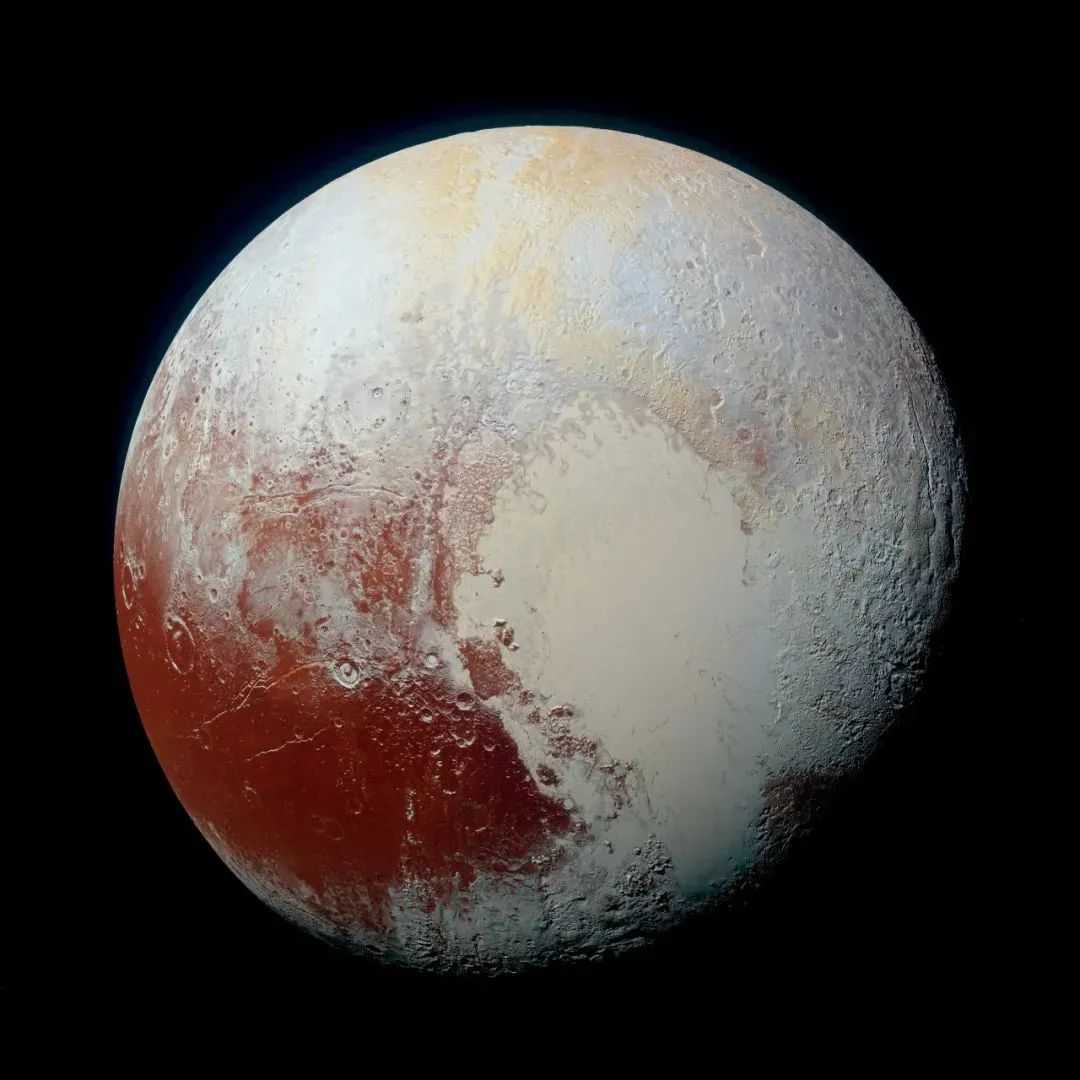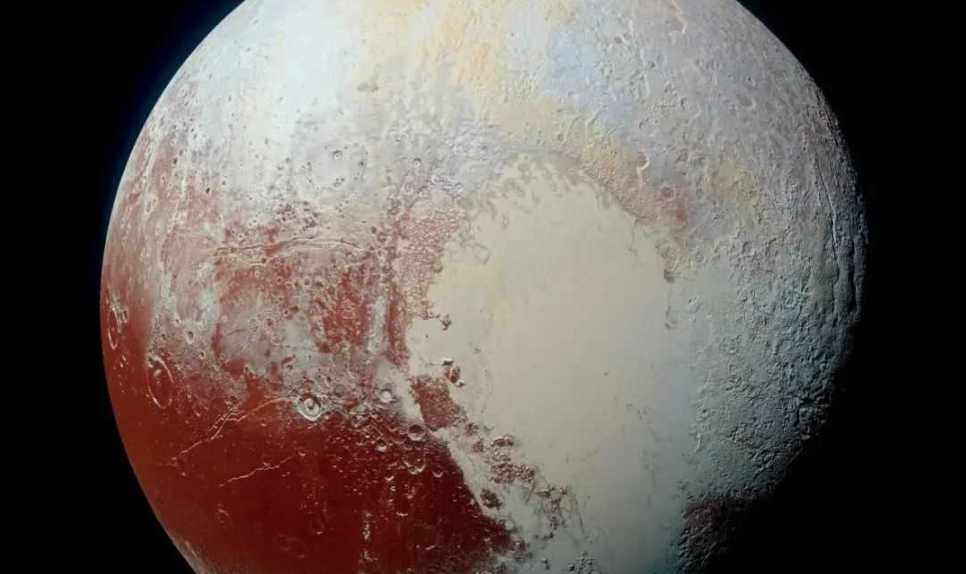New Horizons' Near-Infrared Image Unveils Pluto's Diverse Surface
A near-infrared image of Pluto captured by NASA's New Horizons spacecraft offers unprecedented insights into the dwarf planet's complex surface. By combining this infrared data with visible-light imagery, scientists can discern the diverse color variations and material types that paint Pluto's icy landscape, revealing clues about its geological history and atmospheric interactions.

Source: Images from the Internet, if there is any infringement, please contact the removal of
The near-infrared spectrum, invisible to human eyes, is crucial for analyzing Pluto's surface composition. This band of light penetrates thin surface layers and interacts differently with various substances, allowing researchers to map the distribution of ices such as nitrogen, methane, and carbon monoxide. In the image, regions rich in certain ices appear distinct: for example, methane ice absorbs near-infrared wavelengths, creating darker patches, while nitrogen ice reflects more light, resulting in brighter areas. These spectral signatures, combined with visible-light color contrasts, highlight Pluto’s striking surface features, from the heart-shaped Tombaugh Regio to the rugged mountains and dunes scattered across its surface.
New Horizons' 2015 flyby of Pluto marked humanity's first close encounter with the distant world, and the mission's continued data analysis deepens our understanding of this icy dwarf planet. Infrared imaging is particularly valuable for studying Pluto's geological activity and the role of its tenuous atmosphere. Scientists can track the sublimation and condensation of ices, processes that reshape the surface over time, and identify areas where cryovolcanic activity may have occurred. By integrating near-infrared and visible-light observations, researchers can create detailed maps of Pluto's surface composition, which in turn help explain how this small, frigid world evolved in the outer reaches of the solar system.
As New Horizons continues its journey through the Kuiper Belt, its discoveries about Pluto stand as a testament to the power of multispectral imaging in planetary exploration. The near-infrared image not only showcases Pluto’s otherworldly beauty but also provides essential data for unraveling the mysteries of icy worlds beyond Neptune. These findings remind us of the diversity of celestial bodies in our solar system and the importance of using multiple wavelengths to unlock their secrets.
-------- END --------






